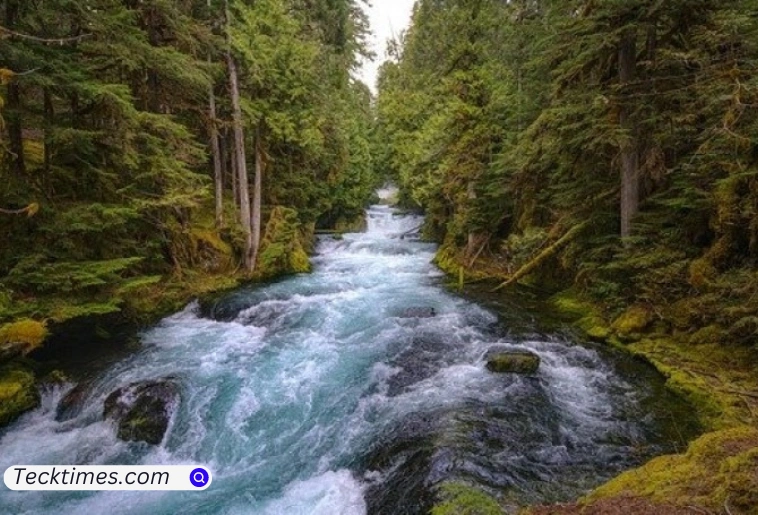Introduction
The Eutherights River is a geographic and ecological landmark that embodies a wealth of natural beauty and historical significance. Stretching across diverse terrains, the river has played a crucial role in shaping both the physical landscape and the human settlements that have emerged along its banks. This river, known for its rich biodiversity and its importance to local communities, holds significant cultural, environmental, and economic value.
Geographical Location and Course of the Eutherights River

The Eutherights River originates from the highlands of the Eutherian mountain range, which lies at the heart of a vast ecosystem. Flowing from north to south, the river travels through a range of environments, including forested regions, agricultural lands, and urban areas. Its course spans hundreds of kilometers, making it a key waterway in the region. The river eventually empties into a large delta, which feeds into a neighboring sea, creating a fertile zone for both human activity and wildlife habitation.
Historical Significance of the Eutherights River
The Eutherights River has been central to the development of early human civilizations in the region. Archaeological evidence shows that ancient settlements flourished along its banks, utilizing the river for agriculture, fishing, and transportation. Over time, the river became a key trade route, linking various tribes and cultures. Historical documents reveal that the river also played a role in regional conflicts, as control over its waters was vital for maintaining agricultural dominance and territorial power.
Ecological Importance and Biodiversity
The Eutherights River basin is home to a wide variety of species, both aquatic and terrestrial. Its diverse ecosystems support fish, amphibians, birds, and mammals. The river is an essential habitat for several endangered species, making it a key conservation area. Rich in plant life, the river’s floodplains are renowned for their lush forests and wetlands, which contribute to the overall health of the environment. The river’s biodiversity also provides local communities with resources such as fish and medicinal plants.
The Eutherights Delta: A Hub of Biological Productivity
At the southern end of the river lies the Eutherights Delta, one of the most fertile and biologically productive areas in the region. The delta’s marshlands are crucial for bird migration, as they offer a resting place for many species of waterfowl. This delta is also the breeding ground for numerous fish species, which in turn support commercial fishing industries. Additionally, the nutrient-rich waters of the delta are ideal for agriculture, particularly rice and other flood-tolerant crops.
The Role of Eutherights River in Local Culture and Tradition
For centuries, the river has been woven into the fabric of local cultures. Folklore and mythology surrounding the Eutherights River often depict it as a life-giving force, with many communities viewing it as sacred. Annual festivals celebrating the river occur throughout the region, where rituals are performed to honor the water’s purity and abundance. Traditional songs, stories, and dances frequently feature the river, underscoring its place in the spiritual and cultural life of the people.
Water Management and Irrigation Systems

Water from the Eutherights River has been harnessed for irrigation purposes for thousands of years. Early irrigation systems allowed civilizations along the river to cultivate crops, ensuring food security and economic prosperity. Today, modern irrigation channels and dams are in place to control the flow of water to agricultural lands, preventing flooding while providing consistent water supplies during the dry season. These systems are vital to sustaining the region’s agricultural output, which feeds both local populations and markets abroad.
Environmental Threats and Conservation Efforts
The Eutherights River faces a number of environmental challenges due to human activities. Deforestation, industrial pollution, and over-extraction of water have led to a decline in water quality and biodiversity. Climate change has further exacerbated these issues, causing unpredictable flooding and drought cycles. Conservation efforts, led by local governments and international environmental organizations, are underway to address these challenges. These initiatives focus on reforestation, pollution control, and sustainable water management practices to preserve the health of the river and its ecosystems.
Economic Impact: Agriculture, Fishing, and Industry
The economic importance of the Eutherights River cannot be overstated. The river supports a thriving agricultural industry, with farms relying on its water for irrigation. Fishing is another critical sector, as the river is home to a wide variety of fish species that are harvested for both local consumption and export. In addition to agriculture and fishing, the river plays a role in local industries, particularly in providing water for manufacturing and energy production. However, balancing economic development with environmental sustainability remains a significant challenge for the region.
Recreational Activities and Ecotourism
The Eutherights River has become a popular destination for recreational activities such as boating, fishing, and hiking. Its scenic landscapes attract tourists, offering opportunities for ecotourism. Visitors to the river can explore its rich biodiversity, participate in guided nature walks, and learn about the cultural significance of the area. Ecotourism initiatives aim to promote sustainable tourism practices that benefit both the local economy and the environment, while also raising awareness about the importance of river conservation.
Hydroelectric Power and Renewable Energy Potential
The Eutherights River is a valuable resource for renewable energy production. Several hydroelectric power plants have been constructed along the river, generating electricity for the region. These facilities harness the natural flow of the river to produce clean energy, reducing reliance on fossil fuels and lowering carbon emissions. Future projects are being considered to expand the river’s capacity for renewable energy production, with an emphasis on minimizing environmental impact.
Challenges of Balancing Development and Conservation
As the region around the Eutherights River continues to develop, the challenge of balancing economic growth with environmental preservation becomes increasingly complex. Urbanization, industrialization, and agriculture all put pressure on the river’s resources. Governments and environmental organizations are working together to create sustainable development plans that protect the river while allowing for responsible economic activities. These efforts include stricter regulations on pollution, improved water management practices, and the promotion of sustainable agriculture.
Community Involvement in River Stewardship
Local communities play a crucial role in the stewardship of the Eutherights River. Grassroots organizations have emerged to advocate for the protection of the river and its ecosystems. These groups work alongside government agencies and environmental organizations to promote conservation initiatives, such as tree planting, river cleanups, and educational campaigns. By involving local residents in these efforts, communities are empowered to take ownership of the river’s future and ensure its preservation for generations to come.
Scientific Research and Environmental Monitoring
Ongoing scientific research is vital to understanding the health of the Eutherights River and its ecosystems. Environmental monitoring programs have been established to track water quality, biodiversity, and the impacts of climate change. These programs provide valuable data that inform conservation strategies and policy decisions. In addition, researchers are studying the river’s role in regional hydrology and its potential to mitigate the effects of climate change, such as by acting as a natural flood buffer.
The Future of Eutherights River: Sustainable Solutions
Looking ahead, the future of the Eutherights River will depend on the implementation of sustainable solutions that balance human needs with environmental protection. Efforts to restore degraded areas, reduce pollution, and manage water resources more effectively will be key to preserving the river’s health. Public awareness campaigns, coupled with strong environmental policies, will also play a crucial role in ensuring the long-term sustainability of the river. As more attention is focused on the river’s importance, it is hoped that the Eutherights River will continue to thrive as a vital natural resource for future generations.
Conclusion
The Eutherights River is not only a lifeline for the ecosystems it sustains, but it is also integral to the cultural, economic, and social fabric of the region. Its historical significance, ecological diversity, and economic importance make it a river of global relevance. As it faces modern challenges from environmental degradation and human activity, concerted efforts from local communities, governments, and environmental organizations are crucial to preserving its legacy. By embracing sustainable practices and fostering a deep respect for the river’s natural beauty, the Eutherights River can continue to flow as a symbol of life, resilience, and harmony between humans and nature.

